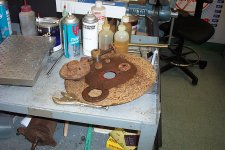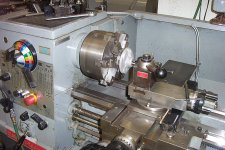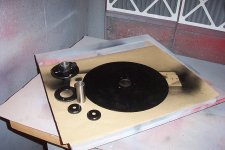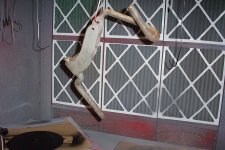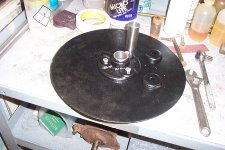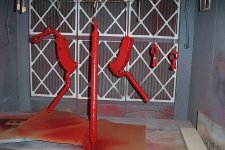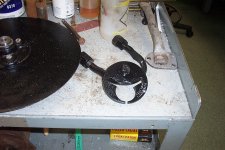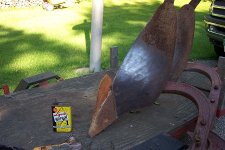Farmwithjunk
Super Member
scott_vt said:Mornin Bill,
I knew if I made a statement like that I could get you to post on my thread again !!!

As you can see, Bob was nice enough to find me a place to buy some replacement parts ! I started taking this thing apart the other day, I took the bar that the lower arms hookup to. On the left side looking from the 3 pt hitch, the 1 5/8" bar goes through a round plate ,3 3/4" OD .312 thk, that has graduation marks on one section. Im assuming that this thing adjusts the camber of the plow, by moving the pull bar fore or aft ? I can post a closeup of what Im talking about. But if you go back to my pic 0160 you can see kind of what Im talkin about! Last night I took off the front coulter arm and cutter. The thing will need to be rebushed, its sloppy. Another question I had was in reference to the coulter adjustment. I re read your thread, and you went over this point, but Im curious if different soil conditions change these settings ? Im certainly a long way away from that point but just curious ! Also whats the deal with the check chains, are they just there in case your assembly loosens up ? Actually, Bob might have answers to all these questions ! Thanks for your help guys !
And a good morning to you Scotty!
That adjustment on the drawbar.... That's known by two terms. "landing" or "width of cut". By rotating the drawbar, you'll move the tail end of the plow left or right. By swinging it left, you apply more pressure to the landslide(s) and/or tailwheel. That makes the plow tend to run more to the right. By doing so, you push the front bottom towards the previous furrow, narrowing the cut of the front bottom. Hence the "width of cut" terminology. A PROPERLY adjusted plow will see the front bottom cutting the same exact width as the rear. THEN the tractors right side wheels are adjusted to run in the open furrow. If and when the width of cut is set "just right", the plow SHOULD trail the tractor with the top link running perfectly straight in line with the tractor. Some degree of variation is acceptable, but in general, you want that top link running true. All plows are different, but NORMALLY, you'll want the right side hitch pin to be 10 to 15 degrees FORWARD of the 6 oclock position as a starting point.
On the coulters... At one point, it was commonly accepted that the coulters should run in line with the leading edge of the plow (in line with the shin) As it was more common to be plowing in heavy crop residue, such as corn stalks, it became a more common practice to set the coulter to the left of the leading edge by a small amount. That allows the coulter to cut the "trash" with enough clearance so the shin didn't collect the stalks and "plug" the plow (where stalks and such collect under the beam of the plow, raising it out of the ground.) With-in reason, setting the coulters just to the left of the shin helped to bury the trash and leave a cleaner looking plowed field. At some point, "cover boards" became the rage on moldboard plows. They're the small "wings" that you'll see from time to time just above the moldboards. They catch the "trash" as the plow slices a new furrow and toss it in the existing furrow just ahead of each new swath. That helps to bury trash. In order to make those coverboards work better, the coulter is set even farther to the left, maybe as much as 1". The entire point of the coulter being "left of center" is about burying surface trash and leaving a clean plowed field.
On some plows there is an adjustment on the coulters to set the lowest point farther forward or rearward. Most plows set the lowest point just forward of the plow point by an inch or two. Not sure what would be achieved by moving it back or forward. Now you have me wondering....
And the check chains... I've heard a couple explainations for them, neither that I buy into, but here they are. One, back in the day, 2-bottom mounted plows end up on tractors with wheel spacings tighter than bigger tractors of the day that normally used drawn plows and had LOTS of wheel clearance. Sometimes the coulters could swing out to hit the sidewall of a tire. The check chains were supposedly to prevent that. The other "excuse" I heard was they were more to keep tall weeds and stalks from catching on the coulter hardware. Either may be true. For that matter, they may BOTH be true. I don't know.
Hope this helps,
Bill
